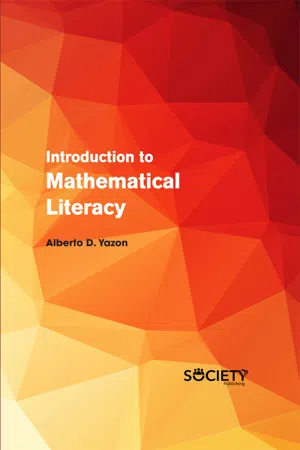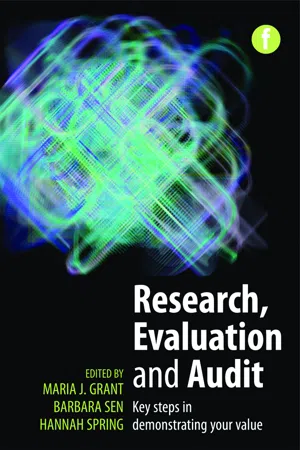Mathematics
Data Analysis
Data analysis involves the process of inspecting, cleaning, transforming, and modeling data to uncover useful information, draw conclusions, and support decision-making. It encompasses a range of techniques and methods, including statistical analysis, machine learning, and data visualization, to extract meaningful insights from datasets.
Written by Perlego with AI-assistance
Related key terms
1 of 5
7 Key excerpts on "Data Analysis"
- eBook - ePub
Number Savvy
From the Invention of Numbers to the Future of Data
- George Sciadas(Author)
- 2022(Publication Date)
- Chapman and Hall/CRC(Publisher)
9 Data AnalysisDOI: 10.1201/9781003330806-9Our inquisitive nature and our insatiable curiosity generate endless questions. From the existential who are we and where are we going to questions regarding the environmental, economic, and social arenas we have our minds constantly occupied and our hands full. Answers to early questions lead to more questions and new ones are added to the mix as everything evolves, practically guaranteeing that we’ll never run out. We strive to understand how our world is but also why it is the way it is. Often times, particularly when it comes to socio-economic matters, we even have opinions on how things should be – and act accordingly. To explain our reality and answer our questions, we devise theories, test hypotheses, and are always on the lookout for patterns. From the Big Bang to the most mundane, we rely heavily on quantification. From the invention of number to our days, our quest for knowledge goes through numerical data.The whole idea behind all the data we produce is to learn from them. Learning occurs through a set of activities that we bundle together under the umbrella term Data Analysis. Some activities involve simple processing of the data to extract relevant information by arriving at some totals, summary statistics, or more detailed frequency distributions. Other activities involve complex manipulations of the data through sophisticated econometric techniques typically aiming at finding causal relationships among variables of interest or quantifying the relative influence of multiple determinants that we suspect drive a certain phenomenon. Data Analysis can have a cross-sectional focus, looking at the characteristics, status, or behaviour of different segments of a population at a given time. It can also be of a time-series nature interested in the direction, magnitude, and pace of change.A Marvellous Toolbox
The analysis of data has a variety of tools at its disposal to distil and communicate insights. Like the contents of an ordinary toolbox, many are well known and used routinely, taught to kids at early grades, and are a part of our daily vocabulary. Others are still intimidating to many and reserved for more specialized applications. They’re all used to produce statistics that crystallize the knowledge we extract from the data and help tremendously to spread it around. As a rule, the main function of these tools is to simplify the complexity hidden in the data. - eBook - PDF
- Alberto D. Yazon(Author)
- 2019(Publication Date)
- Society Publishing(Publisher)
Tools for statistical analysis and methods in statistics such as descriptive methods, analytical methods, inductive methods, inferential methods, and applied methods have been mentioned in this chapter. This chapter provides further information about the func-tions of statistics. 5.1. INTRODUCTION Statistics can be defined as the science of collecting, analyzing, presenting an interpreting data. In order to accelerate the theoretical as well as practical development in statistics, it is required to turn the large amounts of data, which are available in a number of applied fields into useful information. Data are the facts and figures, which are collected, analyzed, and summarized for the purpose of presentation and interpretation. Data can be categorized into many types. Statistics is a very wide subject having applications in a large number of different fields. Generally, it can be said that the statistics are the methodology used for collecting, analyzing, interpreting, and drawing conclusions from the information. Statistics can be said to be the methodology that is developed by scientists and mathematicians in order to interpret and draw results from the data which is collected (Figure 5.1). Figure 5.1: Statistics helps in data representation. Source: https://pixabay.com/illustrations/website-statistics-business-3483020/. Even the small things which deal with the collection, processing, interpretation, and presentation of the data is included in the domain of Statistics: Organizing and Analyzing Data 107 statistics. It also does the detailed planning of that introduces all these activities. Nowadays, its scope has been increased and more widened because of its pervading nature. Statistics is now usually used in almost all the fields of human knowledge and some skills such as commerce, business, social sciences, economics, politics, medicine, planning, and other sciences such as physical and natural. - eBook - PDF
Research, Evaluation and Audit
Key steps in demonstrating your value
- Maria J. Grant, Barbara Sen, Hannah Spring, Maria J. Grant, Barbara Sen, Hannah Spring(Authors)
- 2014(Publication Date)
- Facet Publishing(Publisher)
What is Data Analysis? Data Analysis is a vital step in the research process. Whatever method has been applied to data collection, at some point it will be necessary to translate raw data into usable information. Analysis is usually undertaken after all the data have been gathered, but it may also be undertaken during the collection period or as part of a pilot study to ensure the most appropriate method of collection is selected. Whichever approach is undertaken, it is important to remember that without data, no analysis can take place, and that the quality of your analysis will depend, to a great extent, on the quality of your data. As Robson puts it: ‘No data – no project’ (Robson, 2002, 385). What comes before? Before Data Analysis can commence it will be necessary to go through a number of stages. These have been discussed in earlier chapters, but in summary, before the analysis stage, you should have undertaken the following activities: • identifying research problems • searching the existing literature base • critical appraisal of the literature 9 Data Analysis Jenny Craven and Jillian R. Griffiths ‘What is Data Analysis? In fact, what is data?’ ‘Statistics are just plain scary!’ ‘Can’t I get someone else to do this bit?’ • developing the questions and/or hypothesis • applying a theoretical base • sampling strategies • data collection techniques. You should now be ready to start analysing your data. Types of analysis: quantitative and qualitative There are a variety of approaches to conducting research (see Chapter 1) but in general research tends to use an inductive or deductive approach. An inductive approach seeks to build up a theory that is adequately grounded in a number of relevant cases and involves comparing concepts or categories emerging from one stage of the Data Analysis with concepts emerging from the next stage. These comparisons form the basis of the emerging theory. - Mary M. Hatfield, Nancy Tanner Edwards, Gary G. Bitter, Jean Morrow(Authors)
- 2012(Publication Date)
- Wiley(Publisher)
Graphing is a common method of displaying data pictorially. Statistics are used to discuss data numerically. Probability is the mathe- matics used to predict outcomes. TEACHING STRATEGIES If students are to develop mathematical pro- ficiency in statistics and probability, then it is essential that a coherent curriculum, not just a collection of fun activities, is used. This means that you, the teacher, must understand the core ideas of Data Analysis. Data Analysis is a process that involves four stages: (1) formulating the question CURRENT CHAPTER Data Analysis, Statistics, and Probability NEXT CHAPTER (none) PREVIOUS CHAPTER Algebra and Algebraic Thinking Collecting, organizing, displaying, analyzing, and interpreting data and understanding how decisions are made on the basis of evidence, notions of fairness, and predictions of occurrences. is about Data Analysis— Graphing Assessment Data Analysis— Graphing Statistics Probability Teaching Strategies Where's the Mathematics? Conceptual Understanding of Data Analysis, Statistics, and Probability SELF-HELP QUESTIONS 1. Do I know the four stages of the Data Analysis process? 2. Do I know how to create pictographs, bar, line, circle, scatterplot, stem and leaf, box and whisker and other types of graphs? 3. Do I know appropriate ways of using each of the various kinds of graphs? 4. Do I understand the difference among mean, median, and mode and the appropriate time to use each of those measures of central tendency? 5. Do I know the difference between combina- tions and permutations? 6. What do my students need to know about statistics and probability? 7. Do I understand how to use technology with my students as they study Data Analysis? TEACHING STRATEGIES 415 that will elicit the data desired; (2) gathering the data; (3) analyzing the data; and (4) forming and communicating conclusions based on the Data Analysis (Friel and Bright, 1998). Formulating a question to elicit the desired data is a fine art.- eBook - PDF
- Roxy Peck, Chris Olsen, , Tom Short, Roxy Peck, Chris Olsen, Tom Short(Authors)
- 2019(Publication Date)
- Cengage Learning EMEA(Publisher)
These concepts will be developed further in later chapters. Understand the context ➤ Consider the data ➤ FIGURE 1.2 Average contamination concentration (in ppm) measured each day for 200 days. Interpret the results ➤ David Chasey/Photodisc/Getty Images SECTION 1.3 Statistics and the Data Analysis Process Statistical studies are undertaken to answer questions about our world. Is a new flu vac-cine effective in preventing illness? Is the use of bicycle helmets on the rise? Are injuries that result from bicycle accidents less severe for riders who wear helmets than for those who do not? Data collection and analysis allow researchers to answer questions like these. Copyright 2020 Cengage Learning. All Rights Reserved. May not be copied, scanned, or duplicated, in whole or in part. Due to electronic rights, some third party content may be suppressed from the eBook and/or eChapter(s). Editorial review has deemed that any suppressed content does not materially affect the overall learning experience. Cengage Learning reserves the right to remove additional content at any time if subsequent rights restrictions require it. CHAPTER 1 The Role of Statistics and the Data Analysis Process 6 The Data Analysis process can be viewed as a sequence of steps that lead from planning to data collection to making informed conclusions based on the resulting data. The process can be organized into the six steps described below. The Data Analysis Process 1. Understanding the nature of the problem. Effective Data Analysis requires an understanding of the research problem. We must know the goal of the research and what questions we hope to answer. It is important to have a clear direction before gathering data to ensure that we will be able to answer the questions of interest using the data collected. 2. Deciding what to measure and how to measure it. The next step in the process is deciding what information is needed to answer the questions of interest. - eBook - PDF
Successful Dissertations
The Complete Guide for Education, Childhood and Early Childhood Studies Students
- Caron Carter(Author)
- 2018(Publication Date)
- Bloomsbury Academic(Publisher)
Who would benefit from these recommendations? Why should he be cautious with them? What is involved in quantitative analysis? Quantitative analysis in education is the process of presenting and interpreting, in numerical fashion, research participants’ attitudes, views, opinions and/or behaviours. In other words, to examine the distribution of and/or relationships between the variables under investigation: how they are distributed and to what extent and in what ways they are related in a given context (Punch and Oancea, 2014). The primary aim is to identify patterns and regularities in the data (Fielding and Gilbert, 2006). A key issue in quantitative analysis is that the analysis can be undertaken at two distinct levels. The first, and the one that you are most likely to be engaged in as an undergraduate student, is descriptive analysis, or descriptive statistics as it is commonly known. Put simply, this involves the use of appropriate statistical techniques to transform potentially large amounts of numerical data into a form such as tables and/or charts that ‘describe’ your findings in such a way as to make them easy to understand and interpret (Crossman, 2016). The second-level of analysis is what is 212 SUCCESSFUL DISSERTATIONS known as inferential statistics. This is more complex than descriptive statistics and is aimed at drawing conclusions from the data and establishing the extent to which the findings from a sample can be applied to the reference population from which that sample was drawn (Crossman, 2016). Thus descriptive statistics stop at presenting and interpreting data obtained from a sample (a sample of university students, for example), whereas inferential statistics goes a step further: it uses the findings from a sample to make predictions about the reference population (e.g. all the students in a university). - eBook - PDF
Data Analysis and Graphics Using R
An Example-Based Approach
- John Maindonald, W. John Braun(Authors)
- 2010(Publication Date)
- Cambridge University Press(Publisher)
2 Styles of Data Analysis What is the best way to begin investigation of a new set of data? What forms of data exploration will draw attention to obvious errors or quirks in the data, or to obvious clues that the data contain? What checks are desirable before proceeding with an intended formal analysis, or to help decide what formal analysis may be appropriate? What can be learned from investigations that other researchers have done with similar data? Competent statisticians have always used graphs to check their data. Numerical sum- maries, such as an average, can be very useful, but important features of the data may be missed without a glance at an appropriate graph. Careful consideration may be needed to choose a graph that will be effective for the purpose in hand. We will see in Chapter 3 that an integral part of statistical analysis is the development of a model that accurately describes the data, clarifies what the data say, and makes prediction possible. Without model assumptions, there cannot be a meaningful formal analysis! As assumptions are strengthened, the chances of getting clear results improve. The price for stronger assumptions is that, if wrong, the results may be wrong. Graphical techniques have been developed for checking, to the extent possible, many of the assumptions that must be made in practice. Preliminary scrutiny of the data can readily degenerate into data snooping, so that the analysis is unduly attuned to statistical artefacts of the particular data that are to be analyzed. Under torture, the data readily yield false confessions. To avoid this, strict limits must be placed on the extent to which the data are allowed to influence the choice of model for the formal analysis. Even if data have not been collected in a way that makes them suitable for formal statistical analysis, exploratory techniques can often glean clues from them.
Index pages curate the most relevant extracts from our library of academic textbooks. They’ve been created using an in-house natural language model (NLM), each adding context and meaning to key research topics.






